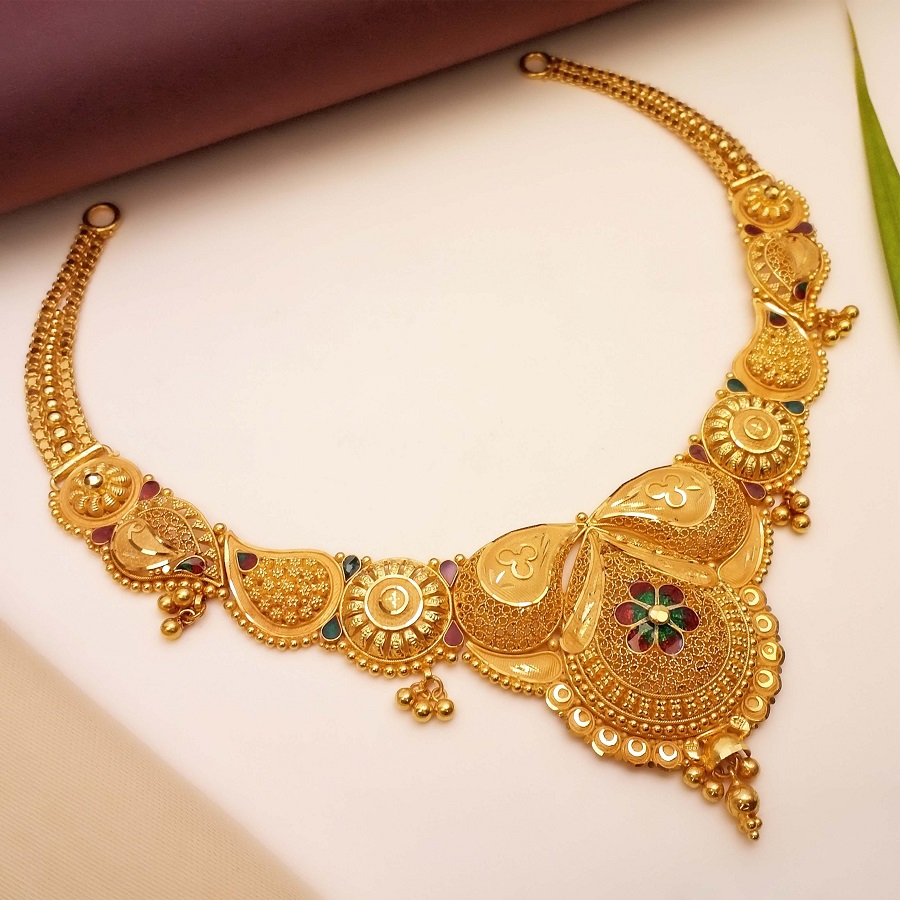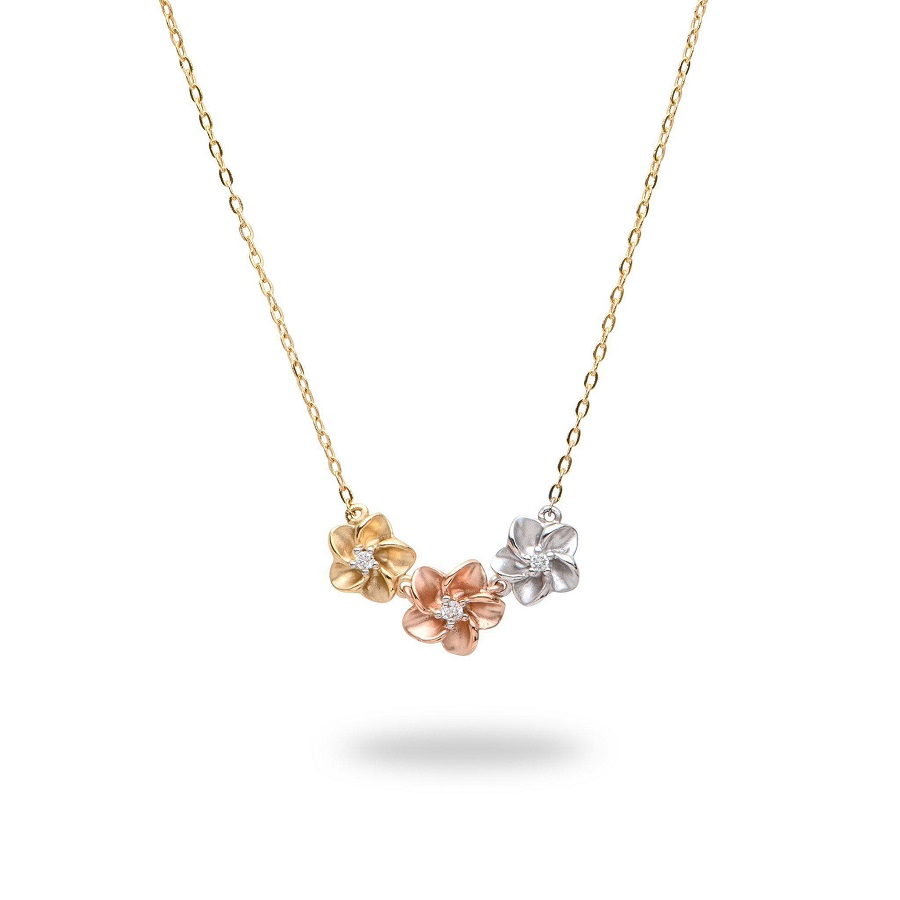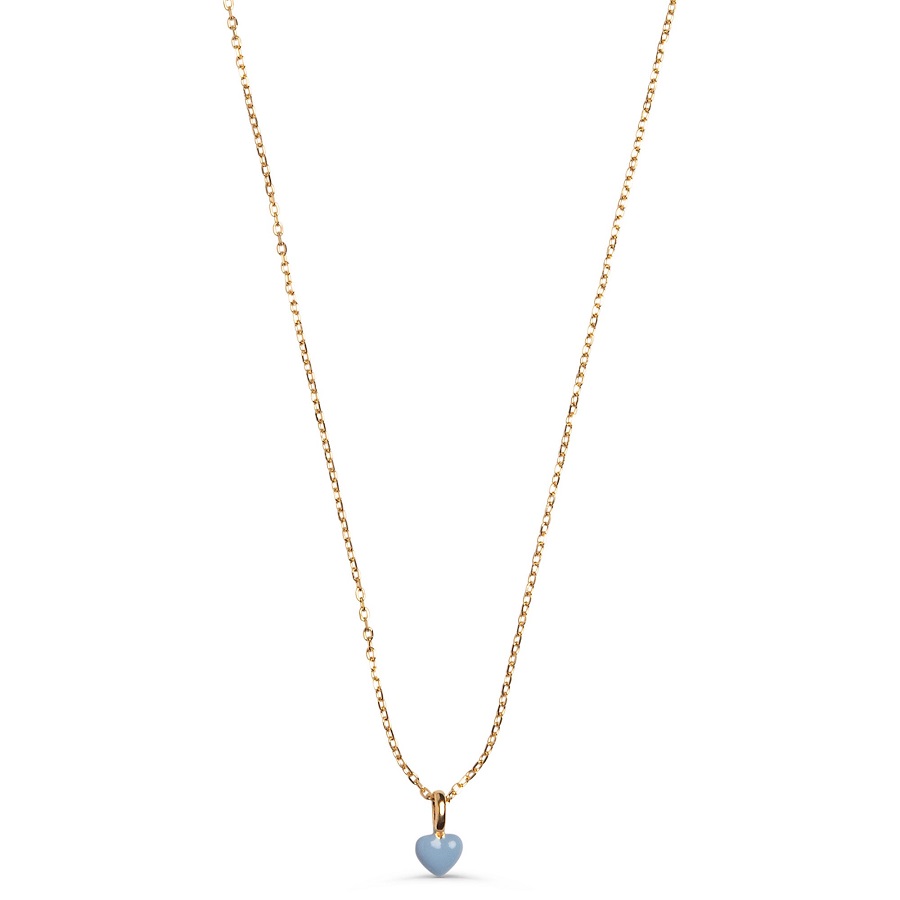The Evolution of Necklace Designs Over the Centuries
Necklaces have been key fashion elements for centuries. This jewelry piece has evolved remarkably over time, adapting to various style demands and cultural shifts. Let’s explore how necklace designs have changed through different eras.
During ancient civilizations, such as the Egyptians and Romans, necklaces were predominantly made from precious metals and stones. They signified status and wealth. Intricate designs featuring gods and symbols were common.
In medieval times, necklaces became more modest due to cultural and religious influences. Designs were simpler, often featuring basic chains with a singular pendant or religious symbol.
The Renaissance period revived the love for art and aesthetics. Necklaces during this era were extravagant. They often featured pearls and gemstones in elaborate patterns.
Moving into the 17th and 18th centuries, necklaces became essential accessories for the aristocracy. Designs included multiple strands of pearls and diamond chokers.
The 19th century introduced new artistic movements. Necklaces reflected these trends with more naturalistic designs. Art Nouveau, for instance, brought necklaces with flowing lines and floral motifs.
During the 20th century, necklaces mirrored the fast-paced fashion changes. From Art Deco’s geometric patterns to the bold colors of the 1960s, each decade had a distinct style.
Today, contemporary necklaces blend traditional motifs with modern materials and techniques. Designers experiment with shapes, sizes, and materials, making necklaces a versatile accessory for any wardrobe.
Across centuries, necklaces have not just adorned necks but also expressed identity, status, and creativity.
 Identifying Classic Necklace Styles: A Timeline
Identifying Classic Necklace Styles: A Timeline
Necklace trends have seen vast changes, reflecting times and tastes.
Ancient Civilizations (3000 BC – AD 476)
In ancient Egypt, necklaces with beads of gold and lapis lazuli were common. Romans preferred necklaces with gemstone amulets. These pieces often represented power and status.
Medieval Period (5th – 15th Century)
Necklaces were simpler, with religious motifs. Pendants often featured crosses or saints, symbolizing faith.
Renaissance (14th – 17th Century)
Artistic flair marked this era’s necklaces. Pieces had intricate designs with pearls and gemstones. The wealthier classes wore these as a style statement.
Baroque and Rococo (17th – 18th Century)
Extravagance was key. Necklaces had multiple pearl strands and diamond-studded designs. They were prized possessions among aristocrats.
Art Nouveau (Late 19th – Early 20th Century)
Nature inspired the necklaces of this time. Designs featured curves and floral patterns. Materials like glass and enamel became popular.
Art Deco (1920s – 1930s)
Geometric designs with bold lines came into vogue. Necklaces featured both symmetry and vibrant colors, matching the era’s zest for life.
Retro Era (1940s – 1950s)
World events influenced styles. Necklaces became bold and colorful again, with an emphasis on large, over-the-top pieces.
Modern Era (1960s – Today)
From the minimalism of the 1990s to the eclectic mix of trends today, necklaces continue to evolve. Today’s necklaces embrace past styles with a contemporary twist.
Through the timeline, each period exhibits distinct characteristics in necklace design. Recognizing these classic styles helps one appreciate the timelessness of the craftsmanship and innovation behind them.
Materials and Craftsmanship: What Goes into a Timeless Necklace
When we discuss timeless necklaces, two aspects stand out: materials and craftsmanship. Each plays a critical role in creating a piece that transcends generations. Here’s what makes a necklace not just an accessory, but a cherished heirloom.
The Choice of Materials
The choice of material can define the necklace’s era and value. Historically, precious metals like gold and silver have been favorites for their durability and lustre. Likewise, gemstones such as diamonds, emeralds, and pearls add luxury and significance to the design. Modern necklaces may include unconventional materials like titanium, beads, and even recycled elements, embracing innovation while ensuring longevity.
The Art of Craftsmanship
Impeccable craftsmanship is non-negotiable for a necklace to be timeless. Skilled artisans employ various techniques to bring designs to life. Hand-crafting ensures attention to detail, from delicate clasps to intricate settings for stones. Whether it’s a hand-knotted string of pearls or a custom-engraved pendant, it’s the precision and care in crafting that makes a necklace truly exceptional.
In summary, it takes quality materials and expert craftsmanship to create a necklace that lasts, tells a story, and becomes a piece of history itself.
Influential Necklace Trends and Their Historical Context
When tracking the history of necklaces, it’s fascinating to see how certain trends left their mark on society. As we delve into the influential necklace trends, we connect each with its historical background, offering insight into the eras that birthed them.
The Lavish Layers of the Victorian Era
The Victorian era (19th century) held rich, ornate necklace designs in high esteem. Women of the time layered multiple strands of pearls, symbolizing status and grace. Mourning jewelry, featuring jet and black onyx, became prominent after Queen Victoria lost her husband.
The Bold Statement Pieces of the 1960s
The 1960s brought forth a wave of individualism in fashion. Necklaces with large, colorful beads and psychedelic patterns captured the decade’s free spirit and cultural revolution. These bold accessories were more than just adornments; they communicated a break from tradition.
The Minimalist Movement of the 1990s
In the 1990s, fashion veered towards simplicity. Necklaces mirrored this change, with minimalist designs that focused on clean lines and understated elegance. Pendants became smaller, and chokers made a comeback, offering a sleek look that countered the excess of the ’80s.
The Fusion of Cultures in Contemporary Necklaces
Today, necklace trends are diverse, blending influences from different cultures and previous eras. You’ll find tribal patterns sitting alongside futuristic materials, a testament to globalization’s impact on fashion. This melting pot of designs reflects society’s growing appreciation for varied aesthetics and histories.
In conclusion, necklaces are not just accessories but also emblems of their times. They bear witness to societal shifts, technological advancements, and global influences. Recognizing these historical contexts enhances our understanding of their lasting appeal.
Iconic Necklaces That Have Defined Fashion Eras
Throughout fashion history, certain iconic necklaces have stood the test of time and continue to be remembered for their distinctive styles and historical significance. Here are some of the most memorable necklaces that have defined various fashion eras:
The Cartier Diamond Necklace of the Edwardian Era
In the early 20th century, the Edwardian era was renowned for its elegance and sophistication. The Cartier diamond necklace epitomized this period’s luxury. It featured intricate designs composed of fine diamonds and platinum, exuding opulence and superior craftsmanship that set the standard for fine jewelry.
The Flapper Beads of the 1920s
The Roaring Twenties, known for flapper culture, introduced the long strands of beads that swayed with the jazz rhythms. These necklaces, often made of glass or pearls, symbolized the era’s rebellion against traditional norms and the embrace of a free-spirited lifestyle.
The Pearl Strands of the 1950s
Mid-century fashion saw the rise of the classic pearl strand necklace. Worn by icons like Audrey Hepburn and Grace Kelly, these elegant necklaces became synonymous with the refined femininity and grace of the 1950s.
The Choker Trend of the 1990s
The 1990s revived the choker, a close-fitting necklace that wraps around the neck. From simple black velvet bands to ornate gem-encrusted pieces, chokers captured the minimalistic yet edgy fashion sense of the decade.
The Statement Bibs of the 2000s
The early 2000s introduced bold statement bib necklaces. These oversized pieces often combined colorful gemstones and intricate designs, showcasing a return to the daring and expressive fashion choices characteristic of the era.
Each of these necklaces reflects the essence of its era while continuing to inspire contemporary design. Recognizing these iconic necklaces helps to understand the deep connection between fashion trends and cultural shifts, illustrating how jewelry can capture the spirit of the times.
How to Incorporate Vintage Necklace Styles into Modern Wardrobes
Incorporating vintage necklace styles into modern wardrobes can be a delightful way to showcase individuality while honoring fashion history. Here are some tips on how to blend these timeless pieces with contemporary outfits effectively:
Choose Versatile Pieces
Start with necklaces that are easy to match. Simple gold chains or pearl strands work with nearly any outfit. These pieces add a touch of classic elegance without overwhelming the modern attire.
Mix Eras with Care
Pairing a 1920s flapper bead necklace with a modern flapper-inspired dress can create a themed outfit. Balance is key. Mix one vintage necklace with current pieces to avoid a costume-like look.
Make a Statement
Let a bold, iconic necklace from the ’60s or a Baroque pearl choker be the focal point. Pair with plain garments to let the necklace shine. This approach can turn an ordinary outfit into an extraordinary statement.
Layer with Modernity
Layer a vintage necklace with newer ones. Different chain lengths and styles can add depth to your look. Keep it tasteful by not overdoing the layering. This method builds a bridge between past and present styles.
Accessorize Thoughtfully
Complement vintage necklaces with modern accessories. A contemporary watch or bracelet alongside a historical piece can create a harmonious blend. Choose accessories that speak to the necklace’s era to maintain a cohesive look.
By following these suggestions, you can effortlessly integrate vintage necklace glamour into a modern wardrobe, creating a unique style that respects fashion’s rich history.
The Role of Necklaces in Cultural and Traditional Attire
Necklaces often carry deep cultural significance aside from being fashion statements. Many cultures have traditional necklaces that are rich in meaning and history. Here’s how necklaces play a vital role in cultural and traditional attire:
Signifying Identity and Status
In many societies, necklaces indicate identity and social status. Tribes may use specific beads or patterns to denote affiliation or rank. For example, a chieftain might wear a distinctive necklace that sets them apart from others.
Symbolizing Milestones and Rites of Passage
Certain necklaces serve as symbols for significant life events. In some cultures, wearing a particular necklace might mark the transition from childhood to adulthood or celebrate a marriage.
Used as Spiritual and Protective Charms
Some necklaces are believed to have spiritual or protective properties. They can be amulets with sacred symbols or stones thought to ward off evil spirits or bring good fortune.
Integral to Traditional Costumes
During festivals or ceremonies, traditional necklaces are essential parts of the costume. They enhance the overall attire and showcase the region’s artistry. A Native American headdress, for instance, is incomplete without its complementing beaded necklaces.
Preserving Heritage and Crafts
Necklaces often embody traditional crafting methods passed down through generations. They help preserve and promote heritage crafts, such as indigenous beadwork or metal smithing techniques.
Necklaces are more than just accessories; they are woven into the fabric of cultural expression and heritage. They bridge past and present, carrying stories and symbolism that are cherished and continued in modern times.
Maintaining and Preserving Vintage Necklaces for Future Generations
Caring for vintage necklaces ensures their beauty and value for years to come. Here are effective ways to maintain these treasures:
Proper Storage
Store vintage necklaces separately to avoid scratches. Use soft-lined jewelry boxes or pouches. Keep them in a cool, dry place away from direct sunlight.
Regular Cleaning
Gently clean vintage necklaces with a soft cloth. Avoid harsh chemicals that can damage old metals and gemstones. For deeper cleaning, use mild soap and water, then dry thoroughly.
Handling with Care
Handle vintage necklaces delicately. Avoid pulling or twisting, especially those with intricate designs or delicate links.
Professional Inspection
Have vintage necklaces checked by a professional jeweler yearly. They can spot issues like loose settings or worn threads before they worsen.
Avoiding Harmful Substances
Keep necklaces away from perfumes, lotions, and sprays. These products can tarnish metals and damage surfaces over time.
Preserving vintage necklaces takes mindfulness and regular care. With these steps, you can keep your vintage jewelry looking stunning and historical.


